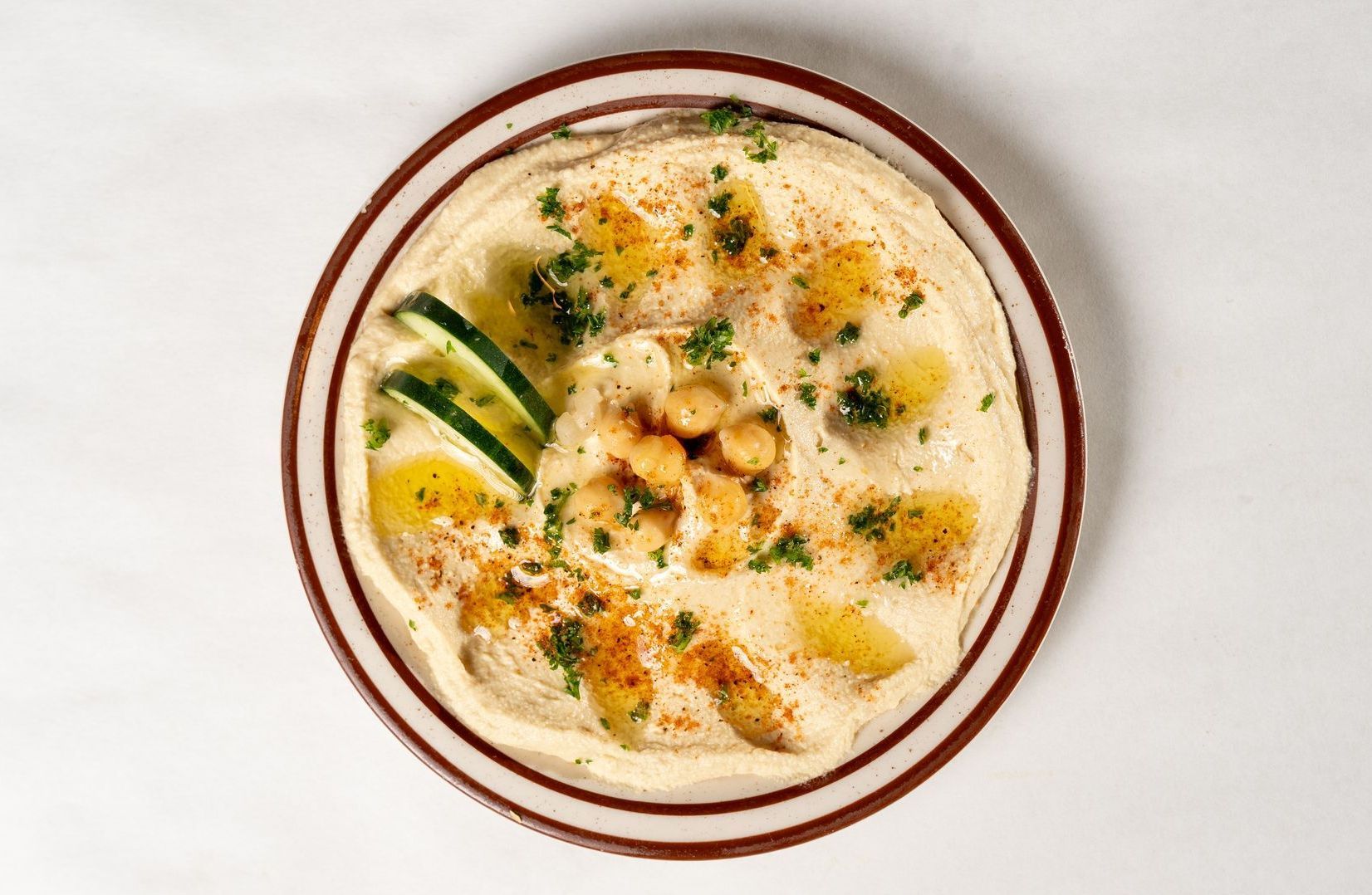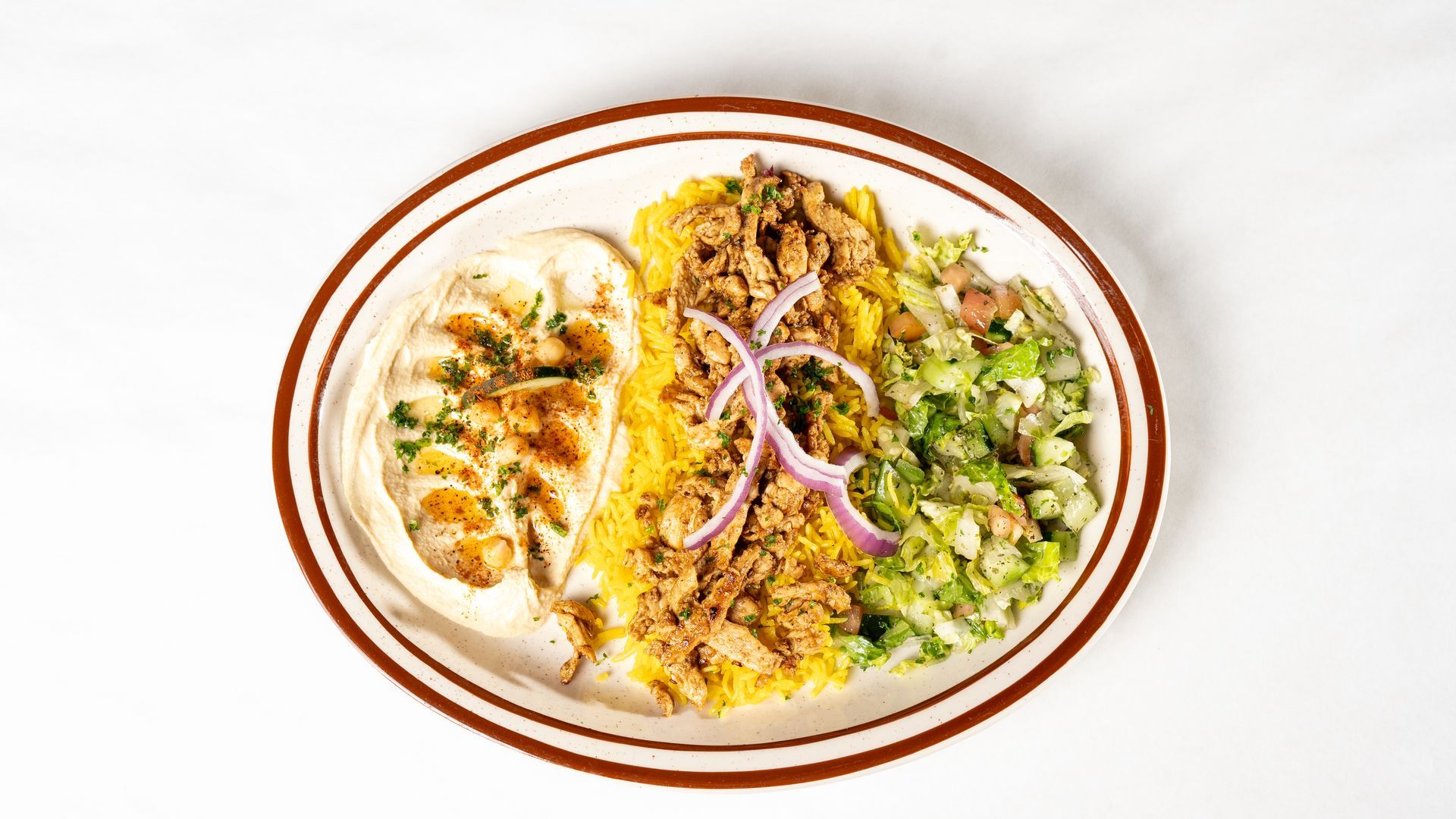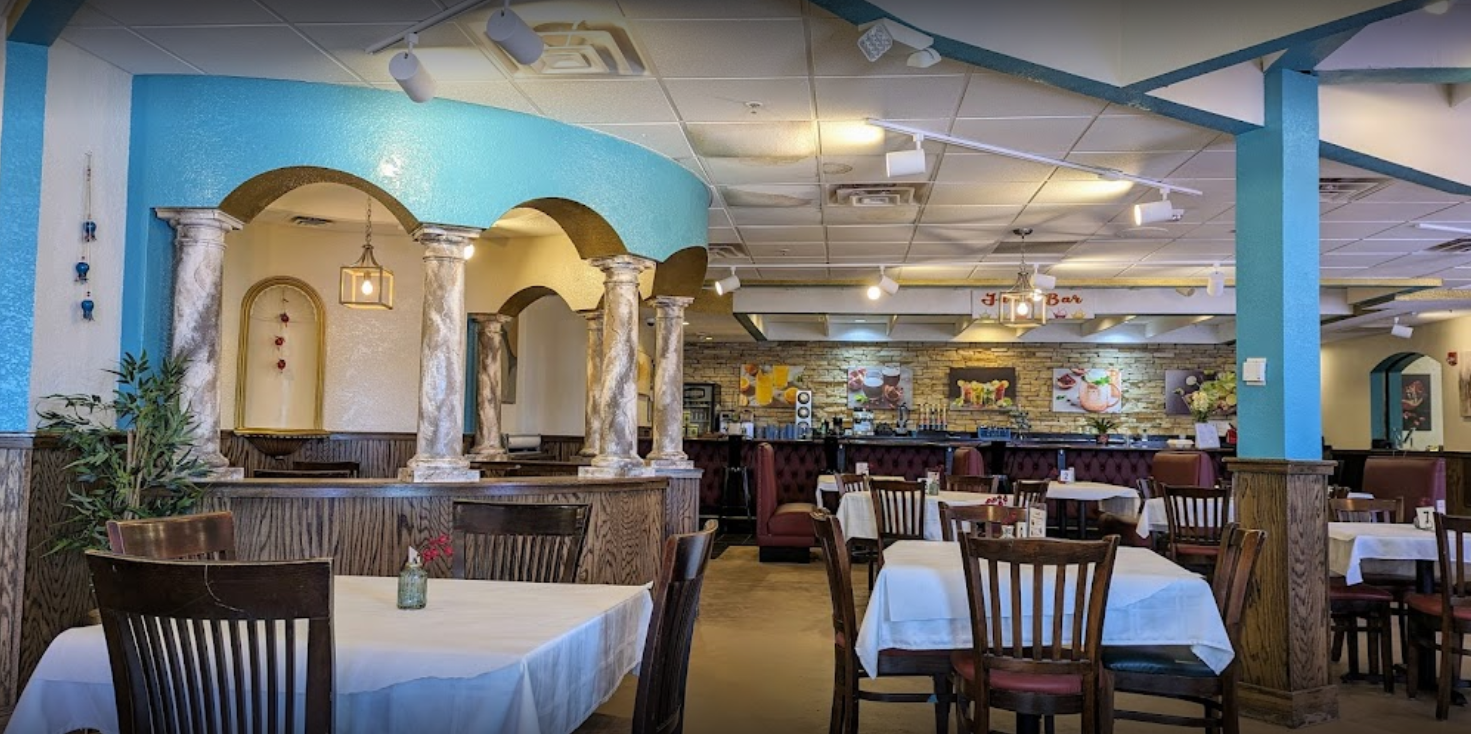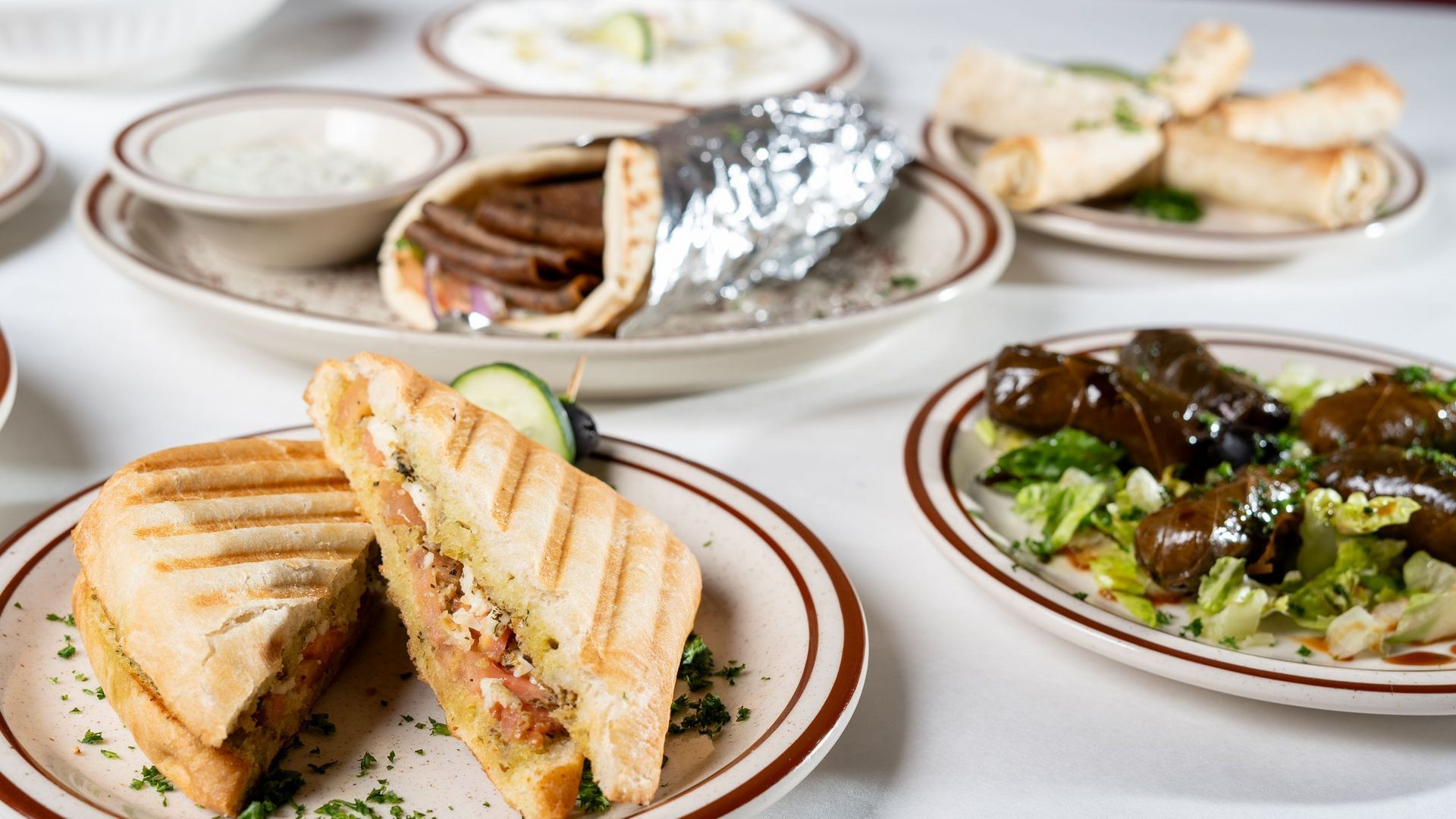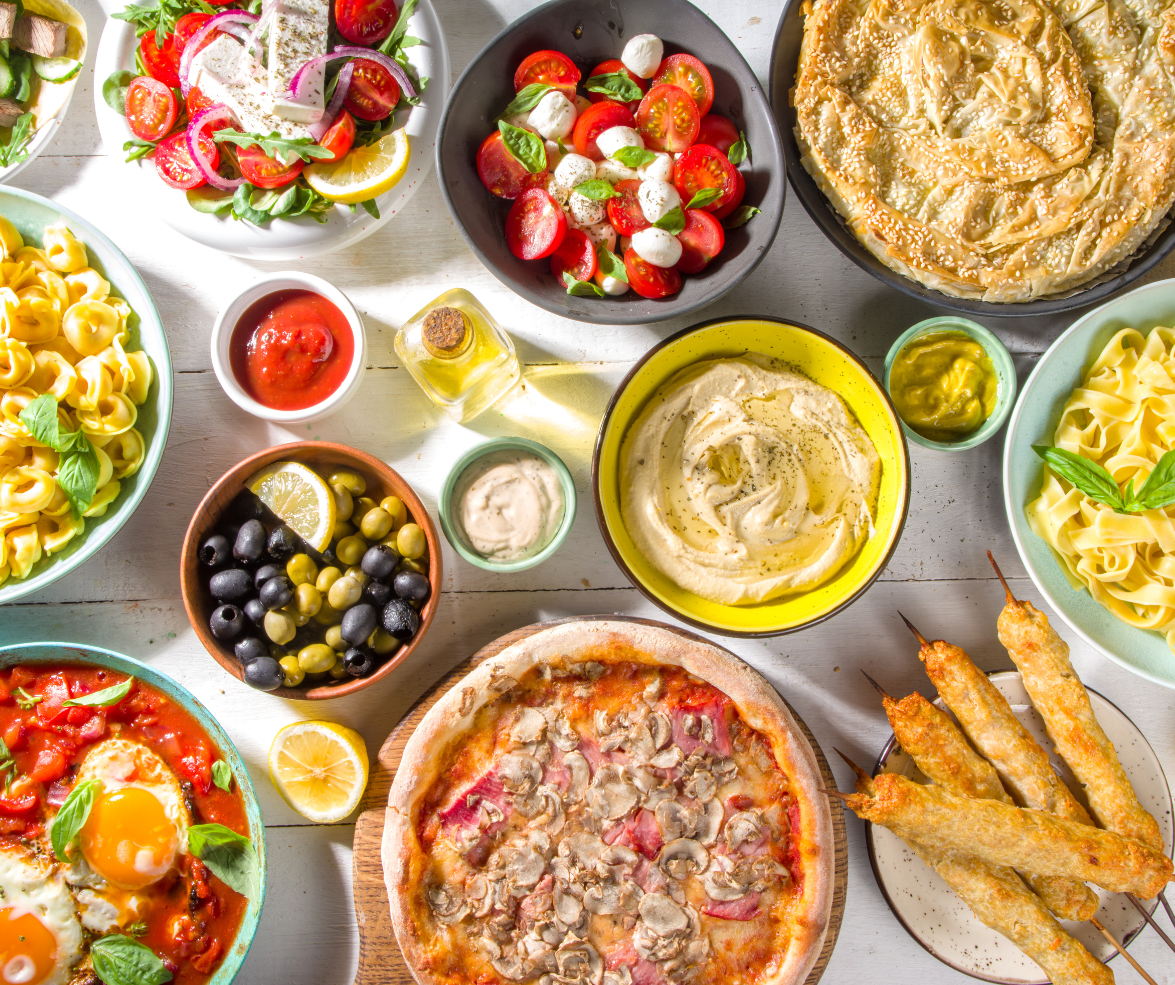Key Takeaways:
- Shawarma and kebab are distinct dishes with different cooking methods— shawarma is slow-roasted on a vertical spit, while kebab is grilled on skewers over open flames.
- The flavor profiles differ—shawarma tends to be tangy and garlicky, while kebabs are bolder and smokier due to their spice blends and grilling technique.
- Shawarma typically uses thin-sliced marinated meat, while kebabs can be made from ground or cubed meat, offering more variation in texture and style.
- Both dishes have regional variations, with local adaptations influencing ingredients, sauces, and presentation.
- Vegetarian and modern fusion options are widely available, making both shawarma and kebab accessible to a range of dietary preferences and tastes.
What's the Delicious Difference between Shawarma and Kebabs?
Shawarma and kebab are two popular dishes that have found their way onto menus around the world. Known for their bold flavors and satisfying textures, they’re often enjoyed as wraps, platters, or quick street food meals.
However, while they may seem similar at first glance, they’re actually quite different in how they’re prepared, served, and seasoned.
If you're new to Middle Eastern cuisine or just curious about your options, this guide explores everything from their cooking methods and ingredients to their regional roots and modern adaptations, offering a deeper appreciation for these beloved dishes.
Is Shawarma The Same As A Kebab?
Shawarma and kebab both originate from the broader Middle Eastern cuisine and Mediterranean region, but their culinary stories follow different paths. Shawarma evolved from the traditional Turkish döner, spreading throughout the Levant where it became a staple in local street food culture.
It’s now recognized and loved globally for its layered meats, often sliced into warm pita with vibrant sauces and fresh vegetables.
Kebab has an even broader reach, appearing in many forms across the Middle East, Central Asia, and parts of South Asia. From Persian koobideh to Turkish shish and Indian seekh kebabs, the dish reflects regional ingredients, spices, and grilling traditions.
Each version offers its own take on grilled meat, showcasing how a simple concept can be adapted to suit different tastes and techniques.
Comparing Cooking Techniques
One of the most defining differences between shawarma and kebab lies in how they’re cooked—and these methods directly influence the flavor, texture, and overall experience of each dish.
How Shawarma Is Made:
- Layering and Marinating the Meat
Shawarma begins with thin slices of beef, lamb, or chicken that are marinated in a blend of spices, vinegar, and often yogurt. The marinade tenderizes the meat and infuses it with flavor over several hours. - Stacking on a Vertical Spit
The marinated meat is carefully stacked onto a large vertical spit, often in alternating layers. It’s then placed in front of a heat source, typically a gas flame or electric burner, and slowly rotated. - Shaving and Serving Fresh
As the meat cooks, the outer layers become crisp and caramelized. These cooked layers are shaved off using a long, sharp knife and served immediately—either in wraps, on plates, or in bowls.
How Kebabs Are Made:
- Preparing the Meat Mixture or Chunks
Kebabs can be made from ground meat mixed with herbs and spices, or from whole chunks of marinated meat. The mixture or cubes are formed and seasoned depending on the style—like seekh with ginger, garlic, and garam masala; shish with olive oil, paprika, and oregano; or koobideh with grated onion, turmeric, and black pepper. - Skewering and Grilling Over Open Flame
The meat is then shaped onto metal or wooden skewers and grilled over charcoal or an open flame. This method allows the outside to char while sealing in the juices. - Serving with Sides or Bread
Once grilled to perfection, kebabs are served directly on the skewer or plated with sides like rice, salad, naan, or flatbread. The smoky finish and spices give kebabs their - signature flavor.Meats and Ingredients Used In Shawarmas and Kebabs
Shawarma is most commonly made with beef, lamb, or chicken, all thinly sliced and marinated in a blend of spices, vinegar, and often yogurt.
This results in tender meat with tangy, spiced layers that pair well with pickled vegetables, hummus, and garlic sauces.
Kebab meat can be either cubed or ground, often combined with herbs and spices like cumin, coriander, and parsley. While traditional versions focus on lamb or beef, chicken and seafood options are also common.
Main Flavor Profiles and Seasoning
Shawarma is known for its well-rounded, garlicky flavor with a hint of tang from ingredients like yogurt or vinegar in the marinade.
Spices like turmeric, allspice, and cinnamon often play a role, creating depth without overwhelming heat. The result is a juicy, aromatic bite with subtle complexity that builds with each layer of sauce or topping.
Kebab, on the other hand, leans into bolder, spicier territory. Common seasonings include cumin, paprika, coriander, chili, and sometimes sumac for brightness. The flavors are more direct and robust, offering a smoky, savory experience—especially when grilled over charcoal.
Whether you're drawn to warm spice blends or smoky char, each dish delivers something distinct.
Serving Style and Presentation
Shawarma is typically sliced and served in warm pita bread or wraps, often layered with fresh vegetables, garlic sauce, and pickled sides. It’s also available on a plate with rice or salad for a more composed meal.
Kebabs come in a wider variety of presentations. They may arrive still on the skewer, de-skewered onto a plate, wrapped in flatbread, or nestled alongside rice, salad, or grilled vegetables.
Popular Sauces and Condiments
What truly elevates both shawarma and kebab are the sauces and sides that complement them. Shawarma pairs beautifully with garlic sauce, tahini, hummus, and pickled vegetables. These elements add creaminess, acidity, and crunch that balance the richness of the meat.
Kebabs are often served with mint yogurt sauce, spicy chutneys, or chili dips, depending on the regional style. These condiments enhance the smoky flavors and add a cooling or fiery contrast.
Regional Variations and Modern Twists
Both shawarma and kebab have been adapted across cultures, with each region adding its own spin. Turkish shawarma (döner) tends to be simpler because it focuses more on the natural flavor of the meat, using minimal seasoning like salt, pepper, and a light marinade.
On the other hand, Lebanese versions are more herb-forward, often incorporating ingredients like garlic, parsley, cumin, allspice, and occasionally cinnamon or cardamom to create a more aromatic and layered flavor profile.
In India, kebabs are infused with bold spices and served with chutneys, while Middle Eastern versions favor smokier, grilled profiles.
Modern twists have also gained popularity—shawarma tacos, kebab burritos, or fusion rice bowls bring a creative flair to these traditional dishes.
Final Thoughts: Just Try Both Shawarma and Kebab!
While shawarma and kebab both originate from similar regions and share a love of bold, spiced meats, they’re distinctly different in preparation, presentation, and flavor. Shawarma offers a juicy, slow-roasted bite with tangy marinades, while kebabs provide a grilled, smoky experience rich with spice.
At Rumaan Cuisine, both dishes are prepared with care and authenticity, giving you the chance to explore their differences side by side.
Whether you’re in the mood for a handheld wrap or a flame-kissed skewer, for a simple meal or for your next big celebration, trying both is the way to go!
FAQs
Which is healthier—shawarma or kebab?
Shawarma and kebab can both be high in protein, but their healthiness depends on how they're prepared. A typical shawarma sandwich (about 390g) contains roughly 773 calories, 78g of protein, 24g of fat (7.9g saturated), and 58g of carbohydrates—mostly from the pita.
In contrast, a kebab of similar size has around 723 calories, 47g of protein, 39g of fat (16g saturated), and 43g of carbohydrates.
Several factors affect these numbers, including the type of meat used (lamb and beef are higher in fat than chicken), the amount of oil or lard in marinades, and whether sauces or heavy breads are added. Kebab is often grilled, which can reduce fat by allowing it to drip off, while shawarma may retain more fat due to slow roasting. Choosing lean meats, lighter sauces, and whole-grain breads can make either option a healthier meal.
Do you offer combo platters with both shawarma and kebab?
Yes, combo platters are available and a great way to sample both dishes in one meal. We have mixed grill plates of Kabob that come with rice, side of hummus & salad for a complete and satisfying experience.
What makes shawarma different?
Shawarma stands out because it’s made by stacking marinated meat on a vertical spit and slow-roasting it. The meat is sliced thinly as it cooks, resulting in a tender texture with crispy edges and deep, layered flavor.
Is shawarma Indian or Greek?
Shawarma isn’t originally Indian or Greek—it has its roots in the Middle East, particularly from the Levant and Turkish döner traditions. However, it has become popular in both Indian and Greek cuisines, each adding their own local twists.
In Greek cuisine, the closest equivalent to shawarma is gyros—a dish made with pork or chicken cooked on a vertical rotisserie, typically served in pita with tomato, onion, and tzatziki sauce.
In India, local versions often use spicier marinades influenced by tandoori or tikka-style seasonings, and it's commonly served in wraps or rolls with green chutney or spicy mayo.
Is Gyros a kebab?
Gyros is not a kebab, though it’s related. It’s a Greek dish made with meat cooked on a vertical rotisserie, similar to shawarma and döner, but it's typically seasoned and served differently, often with tzatziki and pita.

